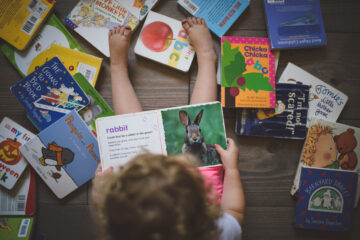September 16th is National Stepfamily Day and represents many different types of families. Some prefer to be called “Bonus” and others prefer “Blended” while some really don’t want to be called anything besides a “Family.” No matter the terminology, being in a family with his, hers and sometimes “theirs” is very different than a traditional in-tact family. Different does not mean it’s bad or less than, just simply different. Here are a few ways these families (including my own) are different:
- There are biological parents connected to the shared children that do not live with the children full-time. They may have parenting time that is 50/50 or they may only see their children a few weeks in the summer; although every schedule is unique, it’s a hard dynamic that exists in these families, both for children and parents.
- Some blended families are formed after death – someone lost a much-loved spouse and then later marries again, bringing along their children as well as a lifetime of good memories of the one who is missing.
- Some families don’t see their extended families very often, due to divorce and hard feelings afterwards.
- Kids in stepfamilies can sometimes feel caught in a war between their biological parents; where in a traditional family their bio parents would be together, under one roof, and even if they argue it’s a less intense situation for the children. Kids can go to their room or possibly go to a friend’s house while parents argue – not the same in a divorced / remarried family. Often kids encounter an emotional war between two homes that can go on for decades
- Most stepfamilies have a “handoff” every week or two where kids leave one house and go to the other house. The way parents act at the handoff determines a depth of internal pain or joy for the children. Having a “Happy Handoff” is actually something that is good for kids, and they may it experience 500-1,000 times in their lifetime.
- A child who loves their stepparent (bonus parent or blended family parent) may often feel they cannot tell their biological parent the truth about all the good things. It may trigger their bio parent and cause stress for children, so many kids just decide early on not to talk about how much they like and love their stepparent to protect their other parent.
- If a child can enjoy a strong marriage between their biological parent and the stepparent, it can have an incredibly strong impact on the child’s view of marriage and their own future family. Research shows that a child in a blended family that is healthy and strong is much more likely to enjoy a lifelong marriage of their own one day.
The last interesting tip about stepfamily life is you get “more credit” for your anniversary than a traditional couple. Take the number of kids you blended, multiply those times the number of years you have been married – that will give you the “anniversary credit” you get instead of a traditional year. Since there is so much happening all at once in bonus family, we believe the parents should get more credit!! Happy National Stepfamily Day to all the blended, bonus, stepparents out there! You matter and your role is very impactful for the children!
Tammy Daughtry, MMFT –Author and Founder of CoParentingInternational.com and ModernFamilyDynamics.com. She and her husband live in Nashville and have a blended family of four!














